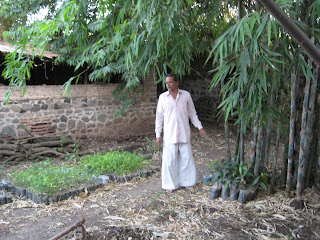But it seems clear the Pakistani tribal areas have been following a trend well known from Afghanistan: The traditional tribal structures have been weakened substantially, and as the state has failed to establish its control, the tribal areas are practically run by different warlords and their militias. An interesting example is that of Mangal Bagh in the Khyber Agency near Peshawar. Syed Manzar Abbas Zaidi from the University of Central Lancashire, UK, has just published "A Profile of Mangal Bagh" which makes interesting reading: From a humble social origin (he worked as a truck cleaner) he has risen to become the de facto ruler of the Khyber Agency. His militia "Lashkar-e-Islam" is popular for maintaining "law and order", i.e. his version of sharia. He follows a sectarian Islamist ideology although he had been an active member of the secular ANP in the past. And, perhaps most interesting, he has not joined the Taliban, but maintains a good relationship with the Pakistani authorities. As Zaidi puts it,
There is strong suspicion that Bagh is fighting a proxy battle for Pakistani intelligence.
This summer, the army was alarmed by violent incidents in Peshawar and launched an "operation" in the Khyber agency against Mangal Bagh. But, as Zaidi writes:
During the operation, security forces were actively engaged in blowing up bases vacated by Lashkar-e-Islam. This was more of eyewash than anything else, since brick structures can be rebuilt easily by such affluent groups. ... Militant movement was seen in the area, even as security forces stepped up their operations, giving rise to the surmise that the operation had been premeditated between the forces and Lashkar-e-Islam to save face for the establishment. ... The operation culminated in 13 days, with an agreement reached between Bagh and the government. The government, of course, declared the operation to be an unmitigated success.Apparently, the Pakistani army and its intelligence agencies are using warlords such as Mangal Bagh, but at the same time, they have to show them (and the public) their limits when things get "out of hand". This (not very new) "strategy" raises a couple of questions: Will support for extremist militants not further de-legitimize state authority? Is it not bound to strengthen Taliban-type ideology, and eventually turn against the army itself? Why is there no attempt to fill the power vacuum otherwise?




